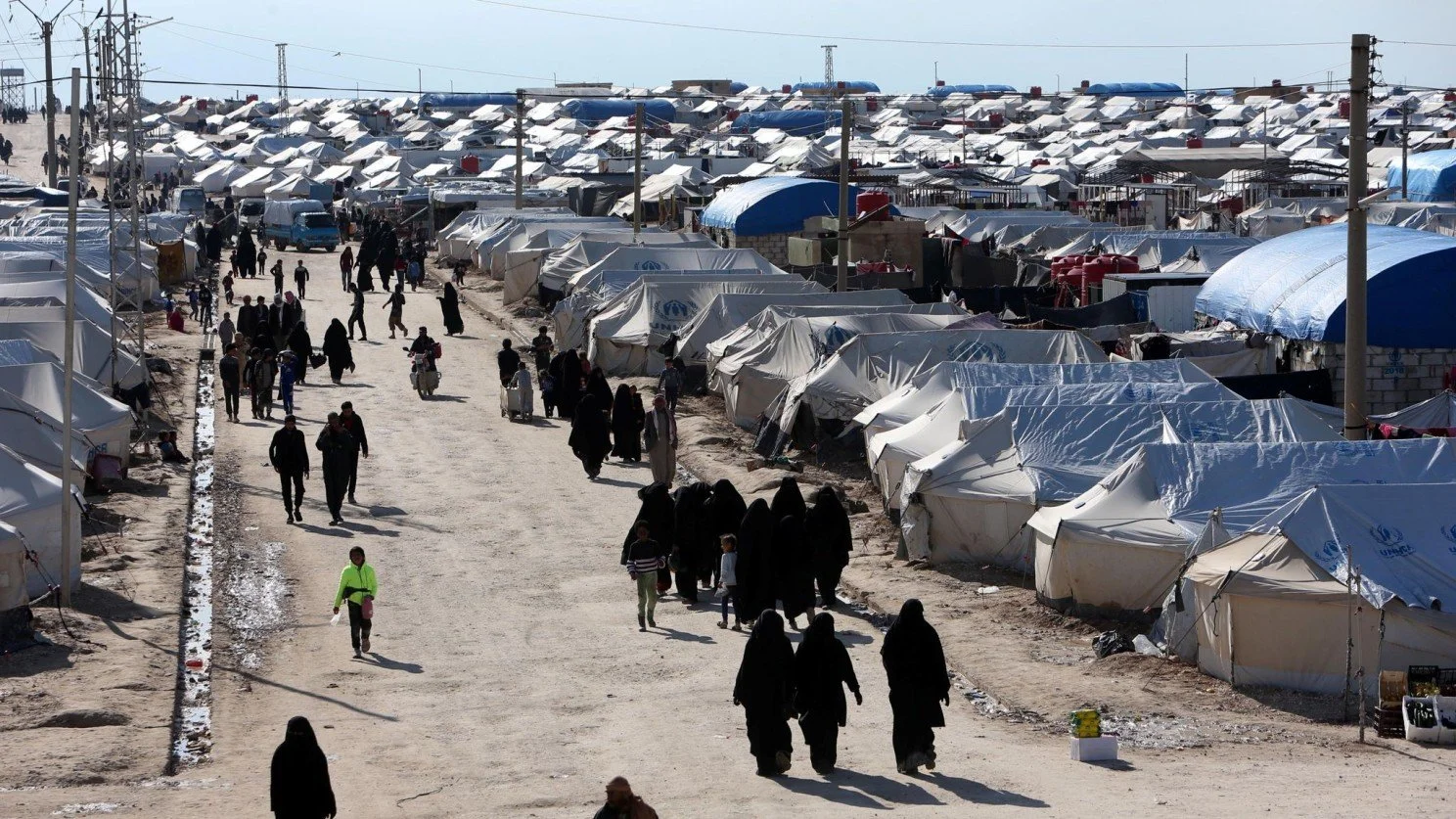Is there an IS Resurgence in Syria and Iraq?
What's Going On?
Recent Islamic State-linked incidents in Syria and Iraq, including targeted attacks and increased counter-IS activities by local security forces, indicate a concerning uptick in threat levels.
While IS remains significantly weakened and territorially defeated, the group nevertheless continues to demonstrate a consistent pattern of exploiting instability, fostering limited attempts at local resurgence wherever possible.
In June, a Reuters interview with more than 20 regional and Western security officials reported that IS is trying to capitalize on regime change in Syria by reactivating sleeper cells in both Syria and Iraq, yet its operational impact was described as modest.
Mourners gather after a devastating attack on a church in Damascus, 22 June 2025 (Source: BBC/Getty Images)
The local security services in both countries have disrupted at least a dozen plots this year, including a December attempt, which was foiled when two IS couriers from Raqqa were intercepted in Iraq. Altogether, IS has claimed far fewer attacks since the fall of the Assad Regime, about 38 in Syria and four in Iraq during the first five months of 2025, roughly a third of last year’s total, and Damascus says it is actively strengthening intelligence capabilities to contain the threat posed by the group.
On the other hand, the IS-linked attack on Mar Elias Church in Damascus has cast doubt on the new Syrian government's ability to contain IS.
It seems likely that the attack was intended to undermine President Ahmad al-Sharaa’s U.S.-monitored commitment to minority protection, while also fragmenting his fragile relationship with the Kurdish self-administration, two fissures Washington has tied to prospective sanctions relief (sanctions have been lifted, regardless).
Syrian President Ahmed Al-Shara'a recently travelled to Paris to meet French President Emmanuel Macron (Source: Getty Images)
To make matters worse, in the aftermath of the bombing, Syria’s interior ministry announced that the IS cell responsible for the attack included two individuals previously held in al-Hol camp, who had been smuggled out. The statement, heavy-handedly blaming the Kurdish security forces for their laxity, was quickly denied by the Kurdish authorities, who pushed back, stating that departures of Syrians from al-Hol “occurred at the request of the Damascus Government.”
This follows a familiar three-step pattern employed by IS:
Stir up a minority group with perceived grievances.
Trigger a heavy-handed response by the perceived oppressor of the group, and
Recruit those alienated by the backlash.
Regardless, this development is particularly concerning as the Syrian government and Kurdish authorities have recently agreed to release thousands of individuals from al-Hol camp. The acrimonious pointing of fingers will not serve to speed up the process of reintegration and rehabilitation.
Across the border, these types of incidents heighten fears in Iraq as well. Similar to Syria, Iraq is also in the process of returning thousands of IS-linked families and adult prisoners accused of belonging to IS from camps within Northeast Syria. Moreover, there have been increased warnings issued by the Kurdistan Regional Government (KRG) and other security officials regarding increased IS insurgent activity, particularly in central regions of Iraq.
Indeed, despite successful counter-insurgency measures and growing counter terrorism operations against them, IS continues to maintain a limited presence in Iraq, which can be seen from ongoing Iraqi government tactical missions against IS. Most recently on 29 June, a joint operation involving Iraqi and Peshmerga forces killed three IS fighters in Salah al-Din governorate. Earlier this year, in March, a high-ranking IS leader (Global Chief of Operations) was killed in a CENTCOM operation which took place in the Iraqi province of Anbar.
Despite these concerns, the scale and frequency of IS attacks remain relatively limited. Nevertheless, continued political instability and economic challenges create conditions conducive to IS's opportunistic attempts to reorganize and rebuild operational cells.
So what?
While the Islamic State remains weakened, the group has shown time and again that it thrives in periods of political uncertainty and fragmented governance. The current regional environment, marked by transition in Syria, economic hardship, and shifting international focus to new conflicts, provides exactly the kind of instability that VEOs like IS exploit to rebuild networks, recruit new members, and stage symbolic attacks.
The relative drop in attack frequency should not be mistaken for defeat, and now is not the time to switch off. Sustained vigilance, intelligence cooperation, and investment in reintegration and community resilience are essential to preventing a resurgence.



